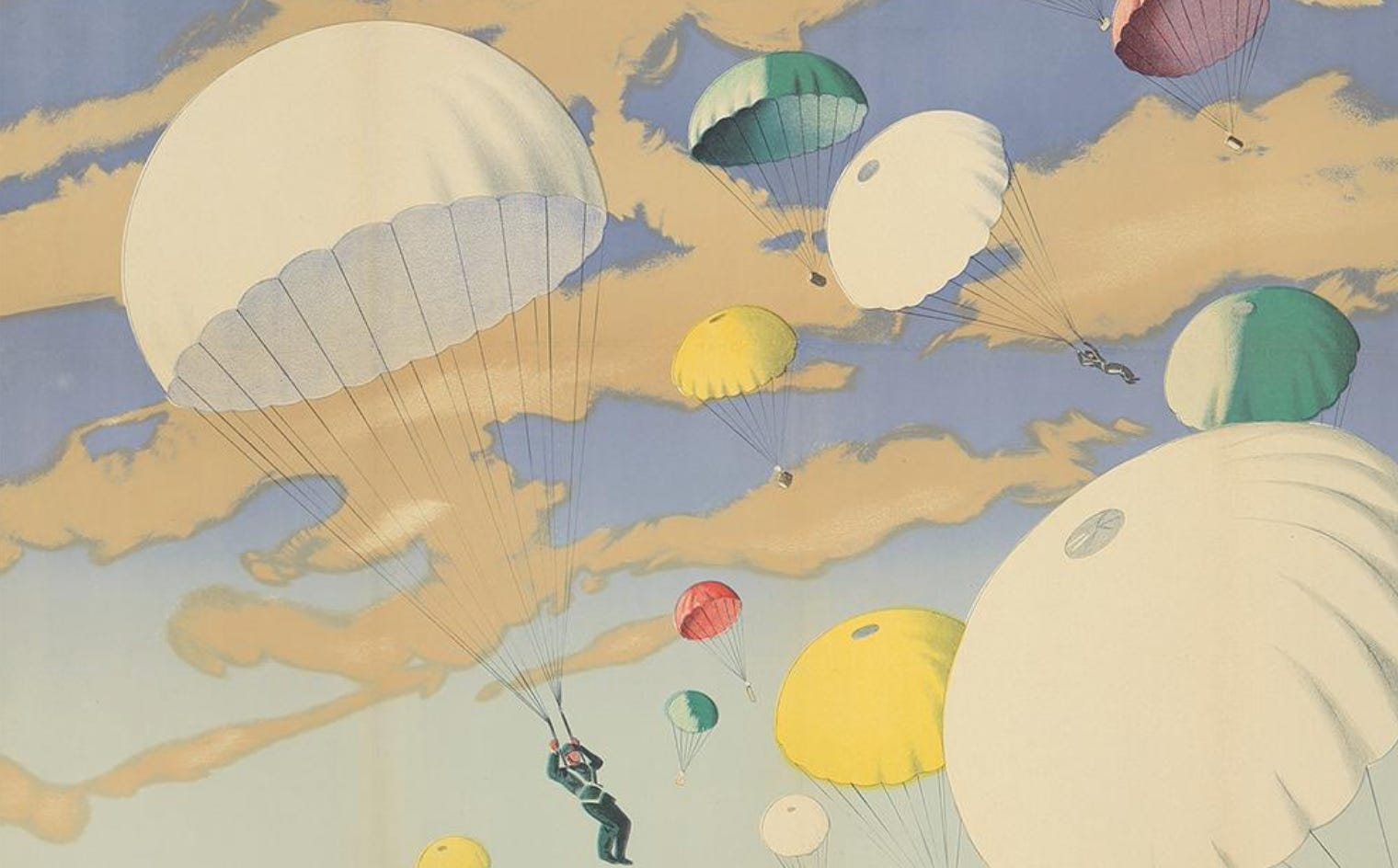Dr. Marshall Brucer was world-renowned for his exposés on nuclear medicine. Dr. Brucer did, after all, play a pivotal role in establishing the field. So, what does this nuclear medico have to do with the airborne in World War II?
Life hit Matthew Ridgway’s 82nd Airborne Division hard at first contact with the enemy. When his division left the States in April 1943, there were a lot of things, in retrospect, it still probably did not know how to do, or at least do well, as a unified division. The first regimental-sized parachute jump was not accomplished until March 1943—a mere month before overseas deployment.
Certainly, these were due to limitations in material, i.e. a shortage of aircraft, but there were other elements at play.
Instructions from the Headquarters, Army Ground Forces included provisions for the airborne division to train, generally, along the lines of a standard infantry division. This had negative consequences. As in the application of history, applying lessons or principles outside the context in which they were designed often leads to failure. And so it was with the airborne division.
One area where this led to failure was in casualty evacuation.
It was noticeable to many observers that the standard ground force plan of medical evacuation will not function in an airborne operation.
Capt. Marshall Brucer, Medical Corps — Surgeon, Airborne Command
The 17th Airborne Division benefitted from a much more robust training schedule. In January 1944, the Airborne Command at Camp Mackall, NC set up the second-ever exercise testing the airborne division. The 17th would depart from three airfields in North Carolina, rendezvous in the air, fly 300 miles and then assault via parachute and glider. Waiting for them on the ground was an opposing regiment, reinforced. Following the landings, the 17th and the “red force” would fight across the North Carolina countryside for five days around Pinehurst and Aberdeen.

Observing the 17th Airborne Division’s surgeon and medical company run through its paces was Captain Marshall Brucer, then a young Medical Corps officer destined for greatness in the field of nuclear medicine. If it were combat, Captain Brucer thought, it would have been disaster.
It was demonstrated that the platoons of the airborne medical company have neither the transportation nor communication facilities necessary for the smooth and rapid evacuation of casualties. In the loading plan… the 1st Platoon of the medical company was not landed… until the 12th hour of the maneuver and was not prepared for evacuation until the 14th hour. Some simulated casualties were available for evacuation by the 8th hour and many were available at the 12th hour. By D+1 many of the battalion aid stations had not yet received word on the location of the clearing station. Because of the rapid movement of units… the division surgeon was never fully informed of their locations in spite of unceasing effort on his part. If the tagged casualties had been actual battle injuries, there would have been 200 needless deaths.
The rapid movement embodied in airborne forces - owing to the shock factor needed to make their light force successful - was what made the standard casualty evacuation plan problematic. Captain Brucer noted the problems stemmed from three things:
Lack of personnel in the division medical company
Lack of transportation
Lack of communications between the aid stations, medical company, and the division surgeon
These were almost identical to the issues faced in Sicily by the 82nd Airborne Division (although no records to my knowledge indicate they had an issue in communications or failures to locate aid stations.) And around this time, in England, as they prepared for the cross-channel invasion of France, the 82nd was wrestling with many of these same questions and coming up with similar solutions independently.
Much like Sicily did for the 82nd, the maneuver set off a reformation in the 17th Airborne Division — although one was the result of training, the other from combat. The 82nd Airborne Division did not benefit from these large-scale training exercises prior to their entry into battle.
Knowledge Exchange
In combat, the 82nd Airborne had done a lot of “OJT” and made-up stuff as they went, simply because it worked. What was remarkable, however, was at the time there was virtually no mechanism to share that knowledge with units training back home, or the Airborne Command.1
After Normandy, TOP SECRET correspondence flew between the head of Airborne Command and Major General Ridgway. In an effort to share lessons and developments between the USA and combat units, Airborne Command threw out the idea of sending a detachment to Europe to act as a knowledge exchange. Freshly minted in his new role as inaugural commander of the XVIII Airborne Corps, Ridgeway enthusiastically embraced the idea:
I have thought for some time that there should be a development and research section here to serve our airborne forces in this theater, and have so recommended to General Brereton.2
On 28 September 1944, the Airborne Center’s European Theater of Operations Detachment opened its doors.
By that date Ridgway’s Airborne Corps had been fighting in Operation Market Garden for over a week. In battle, the 82nd was testing some of Captain Brucer’s prescient recommendations. They just didn’t know it.
In Part 2 of “Sharpening the Talon,” we will pick up with Captain Brucers lessons for the 17th, and discover how the 82nd came up with nearly identical solutions in Europe. See you next week!
The Airborne Command was later reflagged to the Airborne Center. For the purposes of continuity, I have retained “Airborne Command.”
Huston, James. Airborne Team. Historical Division, Special Staff, n.d.






Great read. Can’t wait for next week.